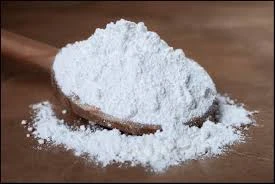
Understanding E471 Food Additive and Its Uses in Modern Food Products
Understanding E471 The Multifaceted Food Additive
In the world of food production and preservation, various additives play crucial roles in enhancing texture, shelf life, and overall quality. One such additive that often raises eyebrows among consumers is E471, also known as mono- and diglycerides of fatty acids. This article delves into what E471 is, its sources, its purposes in food manufacturing, and the concerns surrounding its use.
What is E471?
E471 is an emulsifier composed of mono- and diglycerides, which are derived from glycerol and fatty acids. These compounds help to blend ingredients that usually do not mix well, such as oil and water. By stabilizing mixtures and preventing separation, E471 plays a vital role in the texture and consistency of various food products.
Sources of E471
The fatty acids used to produce E471 can come from both natural and synthetic sources. The most common sources include plant oils, such as soybean, palm, and rapeseed oil, as well as animal fats. This variability raises important dietary considerations; for example, individuals following vegetarian or vegan diets may prefer products where E471 is sourced exclusively from plant materials. Regulatory bodies typically require food manufacturers to disclose whether their E471 is plant-based or animal-derived, although the exact source can sometimes be difficult to determine without clear labeling.
Applications of E471 in Food Products
E471 is extensively used in a wide array of food products, which is one reason why it is recognized on food labels across the globe. Common applications of this emulsifier include
1. Baked Goods It helps to retain moisture and improve texture, contributing to a softer crumb in cakes and preventing staleness in breads. 2. Dairy Products E471 aids in the stability of spreads like margarine and ensures uniform distribution of fat in creams and ice creams.
e471 food additive

3. Confectionery In chocolates, it prevents the cocoa and fat from separating, enhancing the smoothness of the final product.
4. Dressings and Sauces It acts as an emulsifying agent, allowing oil and vinegar-based dressings to maintain a consistent texture without separation.
While E471 serves essential purposes, it is crucial for consumers to be aware of its implications in their diets.
Health and Dietary Considerations
E471 is generally recognized as safe (GRAS) by food safety authorities, including the U.S. Food and Drug Administration (FDA) and the European Food Safety Authority (EFSA). However, some consumers have raised concerns regarding its health implications. The primary worry involves potential allergic reactions, especially for individuals sensitive to certain fatty acids.
Moreover, given that E471 can be derived from animal sources, there are ethical considerations for vegetarians and vegans. The ability to ascertain the source of E471 is vital for those adhering to specific dietary restrictions.
Conclusion
E471 is a widely used food additive that plays a critical role in the production of a variety of food items by enhancing texture and preventing ingredient separation. While considered safe for consumption, it is important for individuals with dietary restrictions or allergies to be vigilant about food labels and the sources of emulsifiers.
As consumers become increasingly conscious of what goes into their food, the demand for transparency in labeling and sourcing is more important than ever. By understanding E471 and its functionalities, consumers can make more informed decisions about the products they choose to include in their diets. Whether for health, ethical, or personal reasons, being knowledgeable about food additives like E471 allows individuals to take charge of their culinary choices in an informed manner.
-
Sodium Dichloroisocyanurate Safety Handling ProtocolsNewsJul.29,2025
-
Mining Chemicals for Copper Extraction Processes GuideNewsJul.29,2025
-
Fertilizer for Sale Shipping and Storage TipsNewsJul.29,2025
-
Dimethyl Disulfide as Sulfurizing AgentNewsJul.29,2025
-
Benzotriazole Safety Data Handling and Storage GuidelinesNewsJul.29,2025
-
Ammonium Bicarbonate Safety Handling Storage GuidelinesNewsJul.29,2025
-
The Transformative Role Of Trichloroisocyanuric Acid in Water TreatmentNewsJul.23,2025
Hebei Tenger Chemical Technology Co., Ltd. focuses on the chemical industry and is committed to the export service of chemical raw materials.
-

view more DiethanolisopropanolamineIn the ever-growing field of chemical solutions, diethanolisopropanolamine (DEIPA) stands out as a versatile and important compound. Due to its unique chemical structure and properties, DEIPA is of interest to various industries including construction, personal care, and agriculture. -

view more TriisopropanolamineTriisopropanolamine (TIPA) alkanol amine substance, is a kind of alcohol amine compound with amino and alcohol hydroxyl, and because of its molecules contains both amino and hydroxyl. -

view more Tetramethyl Thiuram DisulfideTetramethyl thiuram disulfide, also known as TMTD, is a white to light-yellow powder with a distinct sulfur-like odor. It is soluble in organic solvents such as benzene, acetone, and ethyl acetate, making it highly versatile for use in different formulations. TMTD is known for its excellent vulcanization acceleration properties, which makes it a key ingredient in the production of rubber products. Additionally, it acts as an effective fungicide and bactericide, making it valuable in agricultural applications. Its high purity and stability ensure consistent performance, making it a preferred choice for manufacturers across various industries.











